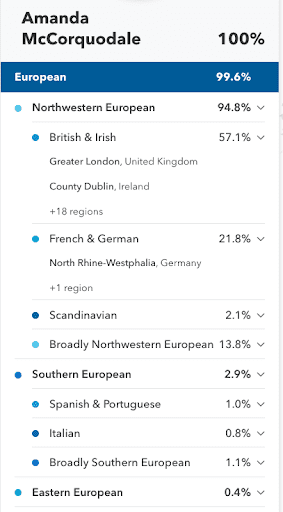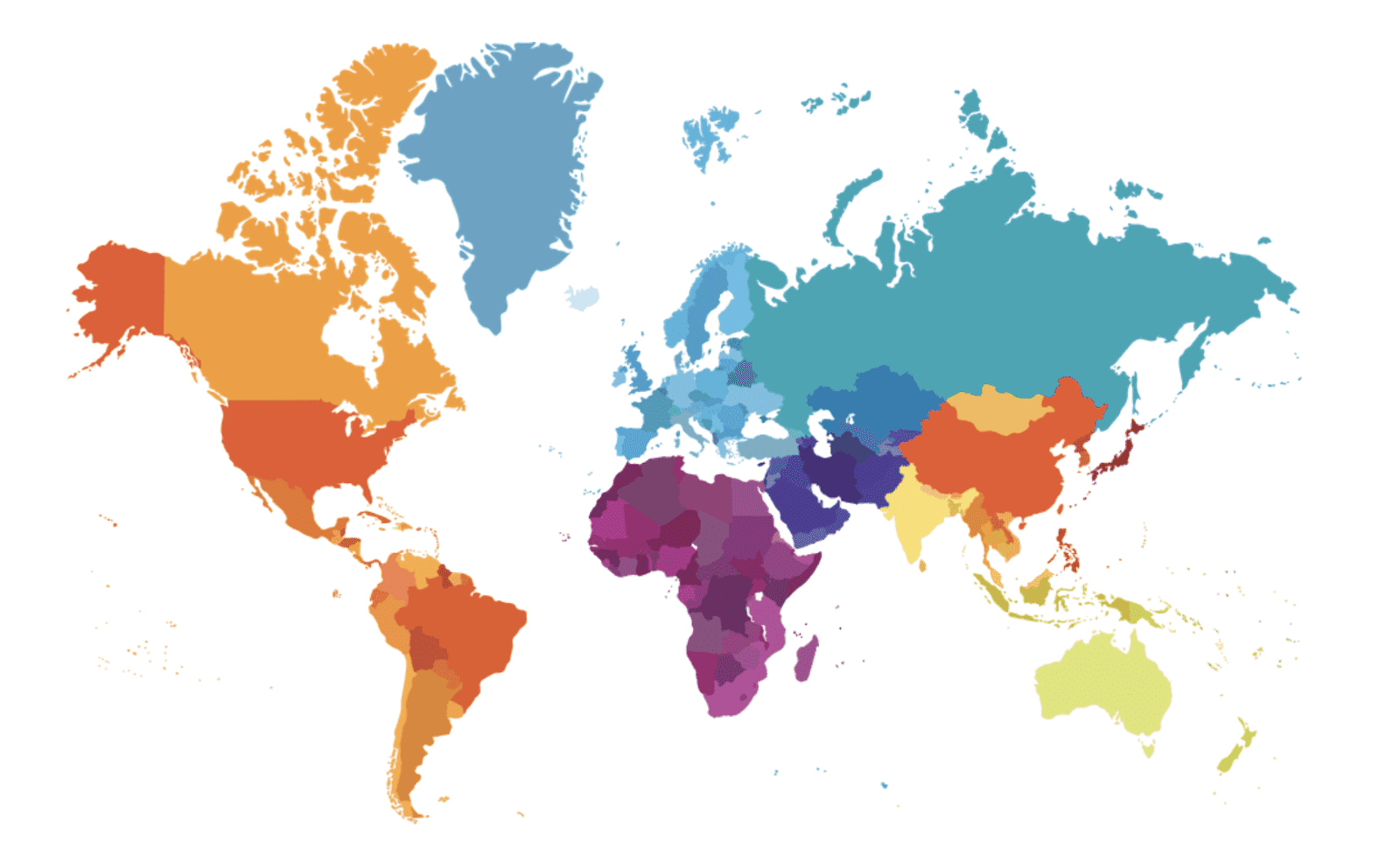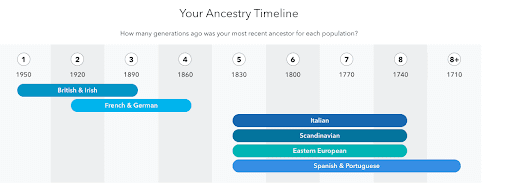By Amanda McCorquodale
Much like when I hesitated over opening my health results, I, surprisingly, also felt a mix of nerves and anticipation about learning my ancestry results.
After all, DNA has the power to bust through family myths and long-held identities of who we are.
Opening Up My Ancestry Results
 I was raised knowing I had deep roots in the American South and German ancestors that moved from Prussia to Buffalo, NY in the 1800s. But mostly, I was raised passionately Scottish. How Scottish? My parents took photos of my brother and me as babies in wee kilts. My brother went to a bagpipe camp and played in a bagpipe band. We helped organize the local Highland Games and we even made a pilgrimage to Scotland to view headstones and church plaques that had our last names carved into them.
I was raised knowing I had deep roots in the American South and German ancestors that moved from Prussia to Buffalo, NY in the 1800s. But mostly, I was raised passionately Scottish. How Scottish? My parents took photos of my brother and me as babies in wee kilts. My brother went to a bagpipe camp and played in a bagpipe band. We helped organize the local Highland Games and we even made a pilgrimage to Scotland to view headstones and church plaques that had our last names carved into them.
Fortunately, my 23andMe Ancestry Composition results confirmed that I was indeed partly Scottish, but it also showed I had an equal percentage of English, German, and Irish ancestry. There were even small amounts from regions in Scandinavia, Spain, and Portugal, as well as western Asia and northern Africa.
I was surprised to see that my 23andMe is even able to pinpoint the very regions in some countries that my genetic ancestors most likely lived as well as a timeline of when ancestors lived in those countries.
Indeed, the Scottish and German ancestors were the most recent immigrants to America so in some ways, it made sense that those cultural identities held the most weight in my family lore. But, having never identified with the other heritages felt like a slight to those branches of the family tree. There is a unique satisfaction in having a more complete picture.
My DNA Relatives
As my DNA had revealed surprises in where my family is from, I braced myself to learn who I was related to via the site’s DNA Relatives feature. 23andMe even warns you about this before you opt-in to participate in DNA Relatives, letting you know you might learn something unexpected.
My results didn’t reveal any family secrets, fortunately. They did, however, help us solve one family mystery. More on that in a minute.
DNA Relatives connects you to other 23andMe customers, who have also opted-in and with whom you share DNA, looking at how much DNA you share and the length of the segments of DNA, 23andMe can predict how closely you are related.
But beyond the first few close family members, I knew on my DNA Relatives list, 23andMe matched me to literally hundreds of much more distant relatives, I don’t know at all. I recognized hardly any last names.
But I wanted to learn more about these genetic cousins, so starting with those who shared the most DNA with me, I clicked through names in the hopes that they had filled out their profiles, listing birthplaces or surnames I might recognize.
In one profile, I discovered someone who had listed the last name I’d heard before. It was a name that was bounced around in family discussions as the possible last name of my great-grandmother who was adopted. Sure enough, my DNA relative listed my nana’s birthplace as a birthplace for his family members.
I messaged him through 23andMe and it turns out his great-grandfather and my great-grandmother were brother and sister. He even had photos of the two together, arm and arm in front of their childhood home as adults. We had always assumed that she had no ties to her birth family after what was likely a traumatic separation from her parents. But clearly, that wasn’t the whole story. It gave me joy learning that she and her brother had had a relationship during their adulthood.
Exploring More
Within the first week of opening my results, other DNA relatives seeking answers to mysteries in their own family trees were sending me messages. Just like me, they were looking for information to fill in the connections in their family trees. One woman, who said a certain branch of her family refused to accept her as a relative, was able to find a common ancestor with me that proved her relation to them.
As a result of these discoveries, and the rush of finding answers to mysteries that may have endured for centuries, I began pulling down old family bibles that listed births, marriages, and deaths to paint a fuller picture of extended family trees. I soon fell down the rabbit hole of genealogical research – finding evidence of both slave owners and abolitionists, loyalists and patriots fighting against each other in the Revolutionary War. I know from our own family stories that we have ancestors who were members of the original 13 colonies as well as others who immigrated through Ellis Island.
Some believe DNA testing might be used as a way to further an “us vs. them” mentality. But what I found was quite the opposite. I suddenly felt related to everyone and living in a world where everyone feels like family is a good feeling.
Amanda McCorquodale is a freelance writer. Her work has appeared in Gourmet, Miami Magazine and Mental Floss. She previously worked as an associate editor at the Huffington Post and as an Arts and Culture Editor at the Miami New Times. She lives in New York with her family. This is the third and last part of the series. You can read Part I here, and Part II here.





